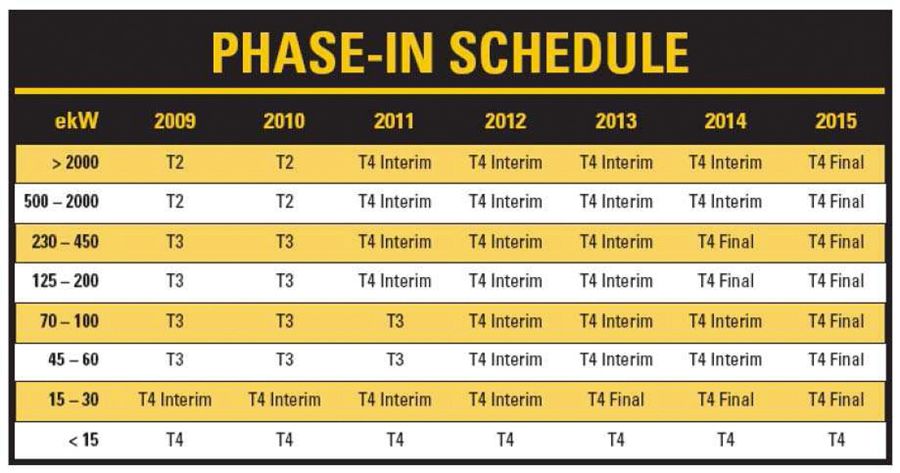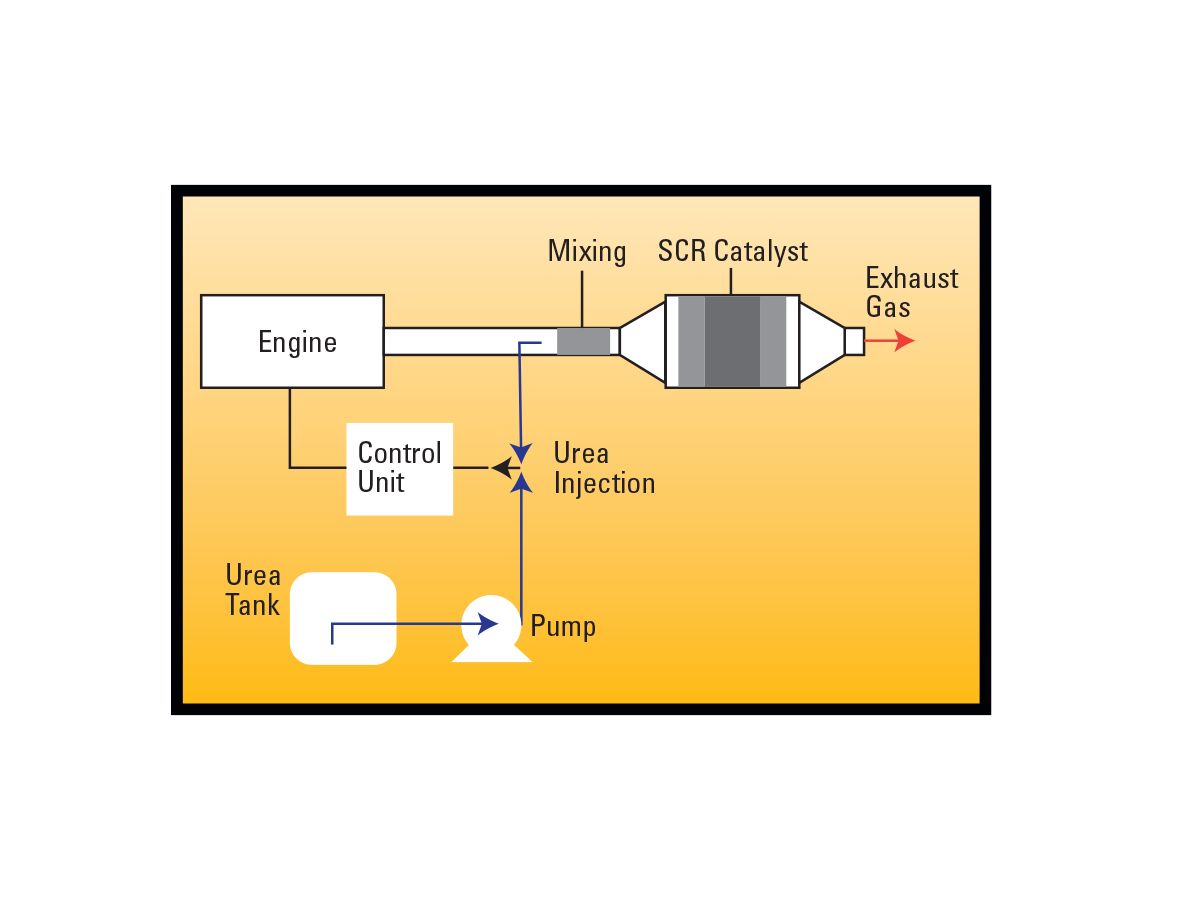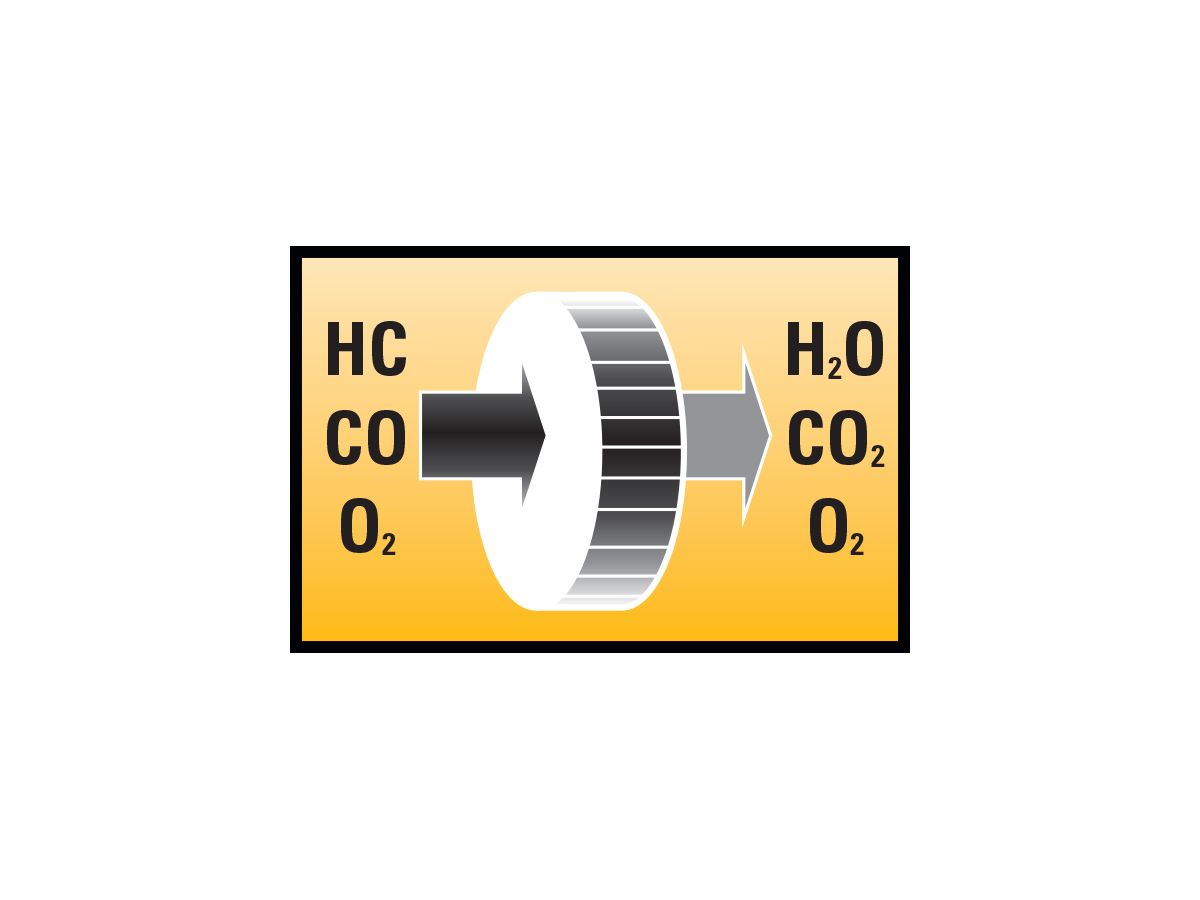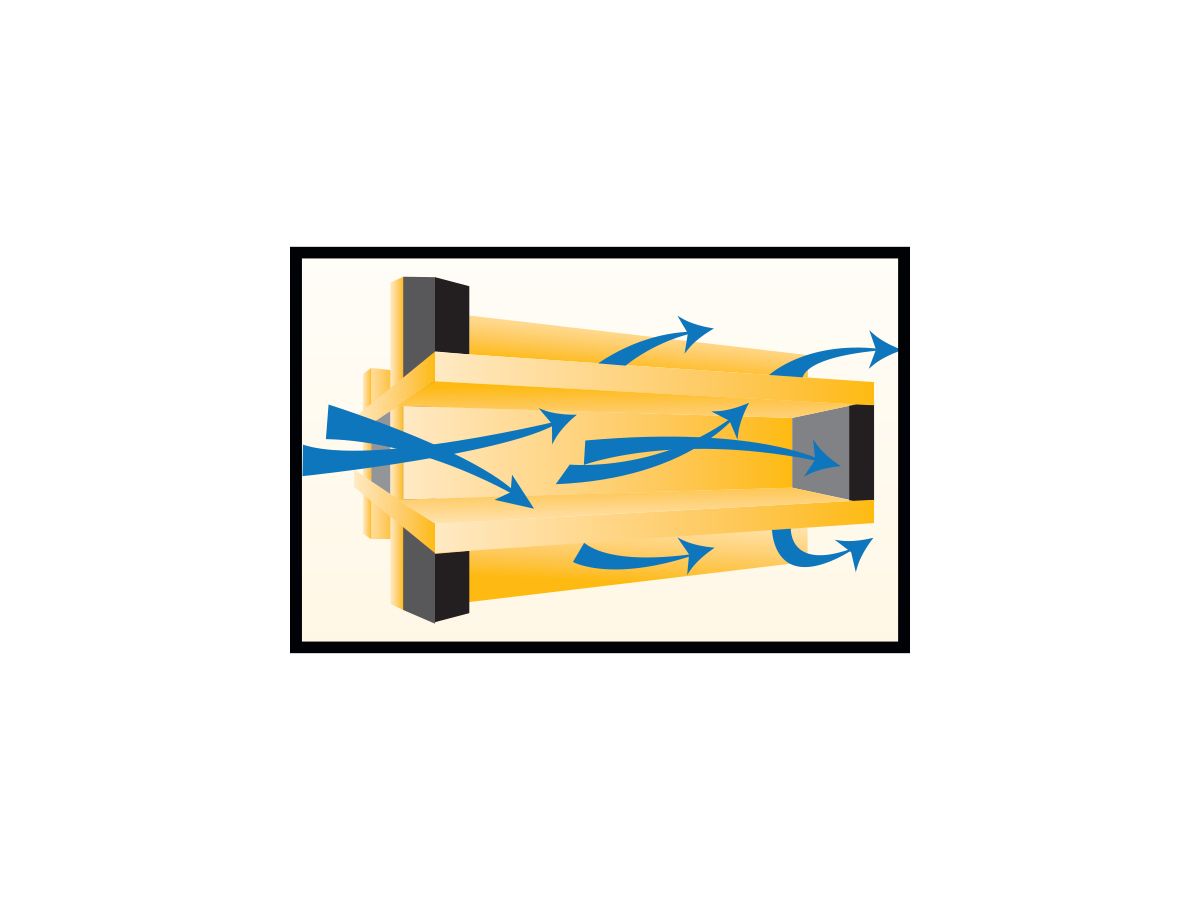UNDERSTANDING DIESEL ENGINE EMISSIONS RULES
Today’s drive toward improved air quality originates from the Clean Air Act of 1970, passed a few months after the first Earth Day. Since then, internal combustion engines have been a high priority for emissions reduction. First came automobiles; then, in 1973, on-highway trucks were identified.
The Clean Air Act as amended in 1990 set air quality attainment standards for the entire nation. The focus was on specific Criteria Pollutants: NOx, carbon monoxide, sulfur dioxide, ozone, lead and particulate matter. The EPA designated areas not meeting national ambient air quality standards (or NAAQS) for any of these pollutants as nonattainment areas. Emissions regulations in nonattainment areas, usually set by state government or local air quality boards, can be far more strict than broad national standards issued by the EPA. In 1994, the EPA began an aggressive, long-term effort to reduce emissions from new non-road mobile diesel engines. This affected new mobile equipment like construction machines and agricultural tractors, as well as industrial equipment, such as diesel-powered generator sets used in mobile electric power generation. It was during this time that the EPA adopted the first set of emission standards (Tier 1) for all new non-road mobile diesel engines of all horsepower categories, except those used in locomotives and marine vessels. These non-road mobile regulations were phased in by engine horsepower range between 1996 and 2000, reducing NOx emissions by approximately 30 percent from Tier 0 levels.
In 1998, the EPA adopted more stringent Tier 2 emission standards for NOx, unburned hydrocarbons, carbon monoxide and particulate matter emitted from new non-road mobile diesel engines. These stricter Tier 2 emission standards were phased in from 2001 to 2006 for all engine sizes. Tier 3 standards, which lowered diesel exhaust emissions below Tier 2 levels for engines from 37 to 560 bkW (50 to 750 bhp), were implemented during the 2005/2006 to 2008 time period.
The Clean Air Act also provided an exemption for the State of California allowing them to set their own non-road mobile emissions limits as reviewed and approved by the U.S. EPA. These standards, set by the California Air Resources Board, or CARB, are generally more restrictive than U.S. EPA standards and are meant to address the significant state air quality issues in such locations as the Los Angeles basin and the San Joaquin valley. Other states may adopt, or opt into, the California standards as long as the EPA grants approval. Engine manufacturers must be aware of and plan for these special California standards in addition to the U.S. EPA standards.
Standards affecting stationary diesel engines
Beginning January 1, 2007, new stationary diesel engines had to meet the EPA’s Compression Ignition (CI) New Source Performance Standards (NSPS), which include diesel powered generator sets. The CI NSPS, for most engine horsepower ranges, incorporated the EPA non-road mobile standards with regard to regulated exhaust pollutants and associated tier levels.
The majority of engines meeting this regulation are factory certified to the same EPA non-road mobile tiers in effect at the time the engine is built. These engines are often certified for both stationary and non-road service. For 2007 through 2010, most stationary diesel engines must meet Tiers 2, 3 or 4, depending on power range. Beginning in 2011, non-emergency engines greater than 130 bkW (175 bhp) and less than 10 liters per cylinder will be required to meet Tier 4 emissions regulations.
The EPA has also included instructions for existing engines. If an existing engine or generator set is to be rebuilt, replaced or overhauled, and the cost is more than 50 percent of the price of an equivalent new engine, or if there is an increase in the “potential to emit,” then the stationary regulation applies. More specifically, if the engine was built before January 1, 2007, and the above conditions are met, that unit must meet Tier 1 emissions after rebuild, repair or overhaul. If the engine was built on or after January 1, 2007, and the conditions are met, the engine must meet the applicable emissions tier level in effect in the year it was manufactured.
Tier 4 and electric power: a special case.
The U.S. EPA Tier 4 emissions regulation came into effect for engines below 37 bkW (approximately 30 ekW or electrical kilowatts) in 2008, and will come into effect in 2011 for diesel powered generator sets rated 130 bkW (approximately 120-125 ekW) and higher. Generator sets utilizing engines rated 56 to 129 bkW (approximately 45 to 120 ekW) will be Tier 4 starting in 2012. So the majority of the diesel powered generator set ratings will be required to be Tier 4 by 2012. The regulation, which applies to both stationary and non-road mobile applications, is split into two parts or “phase-in” periods termed Tier 4 Interim and Tier 4 Final respectively. The initial or interim phase begins in 2011-2012, while more stringent emissions limits come in with Tier 4 Final in the 2013-2015 time period. Figure 1 presents an approximate summary of the regulations as applied to stationary and non-road mobile generator set applications from 2009 on. Please note that emergency standby generator sets (defined later in this paper) are exempt from Tier 4 requirements and can be Tier 2 or Tier 3 depending upon the power rating.
The Tier 4 regulation requires diesel engine exhaust emissions that are significantly lower than previous tiers. For example, Electric Power Tier 4 Final products will produce approximately 93% less NOx and 94% less particulate matter (PM) compared to Tier 1 products. In some cases, manufacturers might have to incorporate various forms of aftertreatment to meet Tier 4 regulations.
The Tier 4 regulations not only apply to new diesel engines used in power generation, but also affect industrial applications, petroleum packages and most, if not all, of the diesel-powered construction equipment used in non-road applications. Since the Tier 4 emissions levels are so low, the EPA decided that emergency standby generator sets, which by their nature run very few hours per year, would be exempt from Tier 4 regulations, including any associated aftertreatment. Furthermore, the EPA states that emergency standby applications can utilize current tier products, which do not require aftertreatment – such as today’s Tier 2 and Tier 3 offerings.
The key to this exemption is the term, “emergency standby.” That is, what installations qualify as “emergency standby”? The following definition based upon Caterpillar’s interpretation of the EPA regulation should clear up any confusion:
Emergency standby installations are those that operate only on the loss of a normal power source such as the utility or the grid. The scenario would be as follows:
- Normal source power is lost.
- User starts the standby generator set to supply power to the electrical loads.
- Normal source power returns.
- User shuts down the standby generator set and supplies the electrical loads from the normal source.
Specific portions of the EPA regulation allow users 100 hours per year of operation for maintenance and exercise requirements, even in the presence of the normal source, and thus the units still qualify as Tier 2 or Tier 3 emergency standby installations. Please note that state or local regulations may further restrict this allowance, so it is important to check with state and local air boards for the most recent interpretation on this issue.
If the standby generator set is used to supply building loads and the normal source is present, the generator set must be Tier 4. Examples of this situation include peak shaving, parallel operation with the grid and storm avoidance. All of these applications will have to use Tier 4 certified generator sets. Manufacturers will offer Tier 2, Tier 3 as well as Tier 4 generator sets in 2011 and beyond. The EPA will require specific engine labeling for both emergency and non-emergency products in order to avoid confusion in the field.
In 2011 the State of California will most likely have emissions regulations requiring the use of aftertreatment on all standby generator sets including emergency units. As a result, it is believed that the vast majority of standby generator sets sold into the State of California beginning in 2011 will be Tier 4.
With this in mind, let’s list the applications that will require Tier 4 certified generator sets in 2011:
- Non-emergency standby units
- Prime Power applications
- Load management/peak shaving
- Electric Power Rental units
In addition, there are potential state and local regulations that may drive the use of Tier 4 generator sets in 2011 and beyond.
It is imperative that everyone associated with the generator set business be aware of these specific Tier 4 issues when considering future installations.
Special local regulations
Along with California, some regions and localities have stationary emission limits far more stringent than EPA diesel engine tier levels. These include non-attainment areas in the United States such as Southern California; the New England states; Atlanta, Georgia; and Houston, Texas. The result is that diesel-fueled generator sets deployed in these areas, even if certified to the appropriate EPA tier level, may not meet local requirements. As the U.S. EPA lowers NAAQS levels nationwide, more areas will fall into non-attainment status and thus further restrictions on engine emissions will likely be implemented.
APPROACHES TO REDUCING DIESEL ENGINE EMISSIONS
Depending on the site and the specific pollutant of concern, the following aftertreatment may be used on diesel engines in an effort to meet specific local codes: Selective Catalytic Reduction (SCR) for NOx SCR systems are used to reduce NOx emissions emitted from engines by injecting a second fluid (usually urea) into the exhaust just ahead of the SCR catalyst. The urea reacts with NOx in the presence of the SCR catalyst and is converted into nitrogen gas (N2) and water (H2O) (Figure 2).
Diesel Oxidation Catalyst (DOC) for Carbon Monoxide (CO), Non-Methane Hydrocarbons and Particulate Matter DOCs are installed in the engine exhaust stream to reduce emissions of hydrocarbons (HC), CO and, to a lesser extent particulate matter (PM), by converting them into carbon dioxide (CO2), water (H2O) and oxygen (O2). (Figure 3A)
Diesel particulate filters (DPF) for particulate matter diesel particulate filters (DPF) are used to remove particulate matter from diesel engine exhaust. They are installed in the exhaust stream and can be packaged in combination with a silencer. DPFs can be either active (requires a regeneration process) or passive (self generating). (Figure 3B)
THE FUTURE
To meet Electric Power product requirements for 2011 and beyond, Caterpillar is working on cost effective solutions to meet both Tier 4 Interim and Tier 4 Final emissions. Specific technical solutions will involve the latest in diesel engine technology and innovation and will use Caterpillar ACERT™ Technology as the foundation. The resulting Caterpillar Tier 4 Electric Power products will be completely supported by the extensive Caterpillar dealer network.











